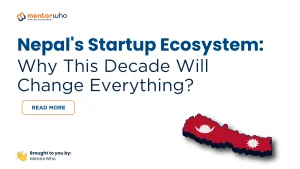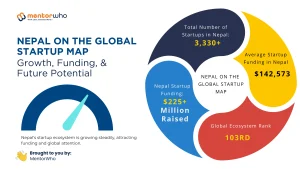Starting a business doesn’t have to be risky or expensive. The right business model can give you a simple entry point, steady growth, and long-term sustainability. In this blog, we’ll explore five proven business models that are easy to launch and hard to kill—even in competitive markets.
Each business model here requires low startup capital, offers clear customer demand, and allows you to scale at your own pace.
Let’s break them down.
Service-Based Freelancing Business Model
The service-based freelancing business model is one of the easiest to start. You don’t need an office, employees, or a big budget. All you need is a simple portfolio, a LinkedIn profile, or an Upwork account, marketable skill and a way to reach potential clients. Whether it’s writing, graphic design, social media management, or web development, there’s always demand for skilled freelancers.
Why this business model works:
What makes this business model sustainable is your control over workload and pricing. You control your hours, pricing, and pace. You can work solo or eventually build an agency around your services. If people regularly ask you for help with a particular skill, that might be your starting point.
Digital Products and Content Creation Business Model
This business model involves turning your knowledge or creativity into digital products. This business model revolves around creating useful content and turning it into digital products. These might include Notion templates, e-books, courses, or toolkits. You build once and sell repeatedly. No shipping. No inventory.
Creators with small but loyal audiences are making thousands every month. For example, Ali Abdaal started with a simple course and turned it into a thriving education business. The key here is trust. If your audience believes your advice works, they’ll buy your products.
Ask yourself: What do people often ask you to explain or teach?
Why this business model works:
This model works because people aren’t buying a product—they’re buying your solution to a problem.You only need to create it once, and it keeps helping others, over and over again. That’s the magic.
You don’t need a huge audience or flashy marketing—just trust and a clear problem to solve. You just need to be genuinely helpful to a specific group of people. If they trust you, they’ll buy from you. No inventory, no shipping, no hassle. If people keep asking you how you do something, that’s your product. Package it. Share it. Sell it.
Local Service Business Model
The local service business model works anywhere. Think mobile phone repair, tailoring and stitching, plumbing, tuition classes, beauty parlour services at home, or agri tool rentals.
You don’t need a website—just a phone, a clear service, and a way to be found (like a Facebook page or Google Business Profile). Many local businesses grow fast because the existing options are either unreliable or hard to reach. If you show up on time and do a good job, people will call you again—and recommend you to others. If there’s something basic people need in your area but can’t easily find, you might be sitting on a business opportunity.
Why this business model works:
This model works because people always need reliable help close to home. Most local options are either inconsistent or hard to reach. If you show up, do good work, and make it easy for people to find you, you’re already ahead. You don’t need fancy branding—just trust and follow-through. Word spreads fast when you solve everyday problems well. That’s how local businesses grow.
Subscription Box Business Model
One of the most underrated business models in Nepal right now is the subscription business model. People enjoy the mix of surprise and convenience—especially when it saves them time and introduces them to quality local products.
Think about it—people already love buying local tea, handmade soaps, snacks, or stationery. Now imagine turning that into a monthly box delivered to their doorstep.
The beauty of this model is in the consistency. You’re not chasing new customers every month—you’re serving the same ones better.
You don’t need a big setup to start. You can start small through Instagram or platforms like Thulo or SmartDoko, and pack orders yourself. As demand grows, partner with local couriers or fulfillment services. The key is to find a niche you love—because if you enjoy curating it, chances are others will enjoy receiving it too.
If there’s a small collection of products you genuinely enjoy putting together, there’s a good chance others will enjoy receiving it too.
Why this business model works:
Because people love convenience—and trust the locals. A well-curated box saves them the effort of shopping around, and adds a small moment of joy when it arrives. In Nepal, where trusted brands are still growing, a good subscription box can quickly earn loyalty. You’re not just selling products—you’re building a habit. And habits lead to recurring income. Start small, stay consistent, and let word of mouth do the rest.
Affiliate Marketing and Niche Blogging Business Model
This business model lets you earn by recommending products you didn’t create. You don’t need to build a product or manage inventory. If you can write consistently about something that solves real problems, this model can turn your blog into a passive income stream.
Start a blog on something you care about, like budget travel, home workouts, or meal prep. Share tips, solve problems, and build trust with your readers. As your content starts ranking on Google, people will find you. Once people trust your content, you can share affiliate links to tools, gear, or courses. When they buy, you earn a commission.
Some bloggers earn thousands every month just from these partnerships. The startup cost is low. You don’t need to create your own product or handle inventory. The setup is simple —just a domain, hosting, and your time.
The real challenge?
Staying consistent. But if you can do that, this model can turn your blog into a long-term income stream.
Why this business model works:
Because people search Google with problems—and they trust the first helpful answer they find. If your blog becomes that answer, you earn both trust and traffic. You’re not selling hard. You’re guiding. And when done right, those recommendations pay you back—over and over again. It scales quietly, costs little, and rewards consistency more than virality.
Also Read: How To Get Funding for a Startup: A Complete Guide to Startup Founders

Final Thoughts: Choose the Right Business Model for You
There’s no single path to building or starting a business. What matters most is picking a model that fits your skills, interests, and lifestyle. Whether you enjoy writing, creating, curating, or offering hands-on services—there’s a path for you.
It doesn’t have to be trendy. It has to be sustainable. You don’t need a perfect plan or funding to begin. You don’t need perfection—just action. Find the model that feels right for you—and take the first step today.
Trust yourself, take the first step. Start with what you have. Test your ideas, learn, and grow from there. The rest follows when you begin.
Want to validate your idea or explore the best model for you?
Every business starts with a single step—and often, a lot of questions. You don’t need all the answers to get started. But knowing where to start—and what not to waste time on—makes a big difference.
Fill out this quick form: Free Business Model Strategy
You’ll get a free business model strategy and an honest look at your startup’s current health.
Let’s make your next move a smart one.




